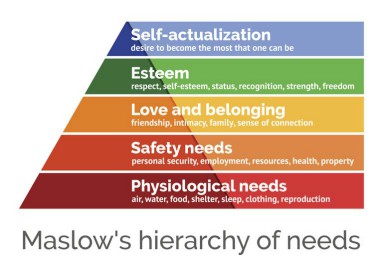
Oh, a storm is threat’ning
My very life today
If I don’t get some shelter
Oh yeah, I’m gonna fade away – Rolling Stones
Mick Jagger, in Gimme Shelter, sings of the importance of having shelter from external threats. Shelter is a topic that doesn’t get the level of attention in prepper circles that food storage or firearms might get, but that doesn’t make it any less important. In fact, if you look at Maslow’s Hierarchy of Needs, a five-tier psychological theory of human needs, Maslow establishes Physiological Needs (food, water, warmth, and rest) and Safety Needs (security and safety) as the first two most critical human needs. It’s clear how shelter is a key component of these two layers of human survival. Shelter provides warmth, rest, and protection.
Using Maslow’s theory, shelter is as important as food and firearms (security). So why don’t preppers discuss it with the same level of importance? Perhaps it’s because most people assume it’s a need that’s already covered. We live in our house, for example. That’s where we’ll bug in and ride out the storm, whatever “storm” that might be; or maybe we’ll bug out to that “cabin in the woods” so many people dream about.
Bushcraft Shelter
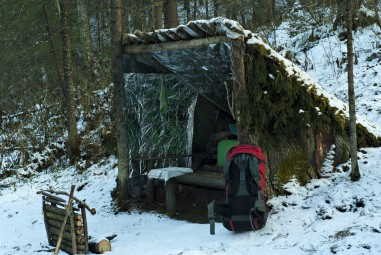
The bushcraft prepper gives shelter far more attention than other preppers might. They know that surviving in the wild requires constructing a shelter from the materials surrounding you. The bushcraft prepper knows how to construct a lean-to shelter out of evergreen branches in order to stay dry, or how to make a snow cave to escape winter wind and frigid temperatures. Short of the bushcraft circles, preppers generally take shelter for granted.
Also Read: How To Build A “Hurricane Katrina” Rifle
But isn’t taking something for granted contradictory to prepping? Prepping is founded in the very idea of not taking everything for granted. Otherwise, why would we prep in the first place? However, Bushcraft shelters, while important in wilderness survival, is not what this post is about. This post is about your most important shelter, your everyday shelter, your house, apartment, or condominium. This post is about protecting “home,” however you define that. It’s about… sheltering your shelter.
Why Your Primary Shelter Should Not Be Taken for Granted
We often overlook threats to our residence. We might look at how we’ll protect ourselves within our shelter, but not how we protect the shelter itself. This is unfortunate. As preppers, we are doing ourselves a disservice if we are gearing up for an EMP or civil unrest, but ignore the far more common threats facing us: natural and man-made disasters, job loss, and crime. These threats happen far more often and forever will happen far more often.
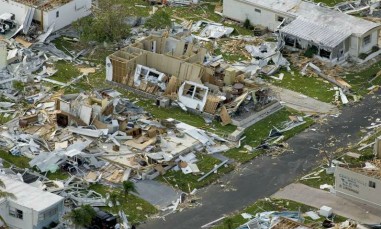
As an example, according to the U.S. Fire Administration, in 2017, the United States had 1,319,500 fires, which resulted in 3,400 deaths. That means while preppers are stockpiling food for an apocalypse that will hit some day, fires—and the deaths resulting from them—are happening every day.
Thus, if you are prepping in order of most-likely scenario to least-likely scenario, your preps should start with the far more mundane subjects. It’s less exciting, but it’s more practical.
Shelter Your Shelter from Natural and Man-Made Disasters
Natural disasters that threaten your shelter include wildfires, hurricanes, earthquakes, etc. You need to examine the threats that are most apt to strike the area in which you live.
Let’s take wildfires as an example. See here the financial losses from 2008 to 2017 in the United States:
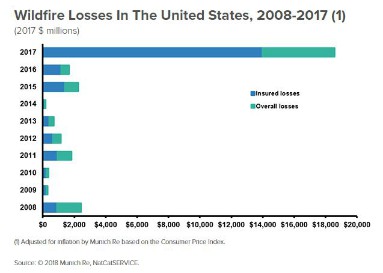
2017 resulted in a dramatic increase! Is this the new norm? If so, it’s important to take precautions!
Related article: Simple Ways to Slow a Burglar at the Front Door
The first step toward reducing risk could be examining your shelter itself, where it’s located, how it’s constructed, and what surrounds it. If you live in a wildfire-prone area, you may want to build a fire-resistant house from the outset (you may be required to by code) or you could choose appropriate materials as you update your home’s exterior.
Headwater Economics, and independent research group, has a downloadable .pdf on building a wildfire-resistant home. A building’s roof, as an example, is the most vulnerable area. Building with fire-resistant materials costs more than conventional materials; but on the flipside, those materials are often of higher-quality and don’t need to be replaced as often.
Another step toward reducing risk, and these steps apply to all natural disasters, is looking at your insurance policy. If you own a house or condo, does your home owner’s insurance cover all the threats you could face? If you rent, do you have renter’s insurance that offers enough coverage?
Note: A standard policy won’t provide coverage if you have water damage from flooding. This is a hard reality many people learn about only after tragedy has struck! If you are in a flood zone, make sure you have a flood damage rider or get a separate flood insurance policy.

The same applies to man-made disasters. Fire isn’t limited to natural causes. Fire detectors and carbon monoxide detectors are snoozer subjects, but they’re critical. Are your detectors hardwired? Do you even have detectors? What about fire extinguishers? Do you heat with wood? Woodstoves are notorious for causing unintended fires. If you do heat with wood, do you have the recommended safe space around the stove where an errant spark won’t cause fire? These are all things to consider as you ponder natural and man-made disasters. Assess your shelter’s weaknesses.
Shelter Your Shelter from Job Loss
Foreclosure rates are very low, but not that long ago, during the Great Recession, it seemed like everyone knew someone that was in foreclosure. According to Bankrate, foreclosure filings for 2018 were reported on one out of every 215 homes. Compare that to 2010, when roughly one in 47 homes was in foreclosure. With rumblings of another recession on the way, those with questionable job security might be wondering how to guard against foreclosure.
- Don’t overextend yourself. Whether that’s buying more home than you can afford in the first place, buying more car/truck than you need or can afford, or spending frivolously at the expense of building a financial safety net. Having enough money to cover a job loss or unexpected expenses is Prepping 101.
- Lock in a fixed rate. Do so while interest rates are low. If you have an adjustable rate mortgage, locking in a fixed rate gives you predictability. Predictability is your friend.
- Don’t go underwater on your home. Don’t spend more than the house/condo is worth, and don’t take out loans against it that don’t increase the home’s value. If real estate prices go down, you could end up owing more than the property is worth. Then, when you must sell, you can’t sell at a profit and face foreclosure.
Shelter Your Shelter from Crime
Home burglaries are not uncommon and are difficult to solve. Burglars are seldom caught, and stolen goods are seldom recovered. This assume that no one is home at the time of the burglary. If you or a loved one is home, the situation can turn out far worse than just stolen goods. Here are some ways to protect your shelter from crime.
- Keep your home well-lit. This means motion-activated lights, ideally solar lights as they are cost effective and continue to function when the power goes out. You can also program your home’s lighting inside, to create the illusion that someone is home. Lights can be automated or controlled with a mobile app.
- Fortify access points. The saying goes that a lock will only keep out an honest person. While I believe that is true, there is no need to make access easier for criminals. Are your doors fortified with strike plates? Are basement windows easy to open? Are windows locked? Walk around your home and imagine yourself as a thief trying to get in. Where would you enter? What would you use? Is there a ladder stored next to the garage making access to upstairs windows easier? Is there an ax next to your wood pile? Lock up any tools that could be used.
- Don’t stash a key. Faux rocks, under doormats, under plant pots, atop door frames – people are not stupid. If you find yourself forgetting your key often, give one to a trusted neighbor, or install a door lock with a keypad.
- Maintain your shelter’s surroundings. Move large shrubs next to the house where someone could hide. Keep your yard maintained so people know there is ongoing activity at your home. If you own a security system (or even if you don’t), put up a sign indicating the home is protected.
- Get home protection. Whether you decide to keep a handgun or shotgun for home defense, pepper spray, or a pack of Dobermans, make sure that you have something.
Shelter Your Shelter from the Apocalypse
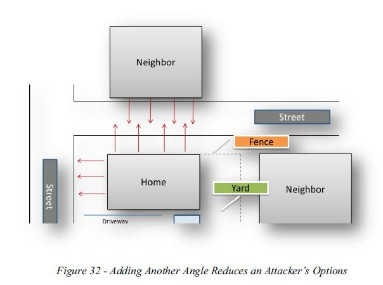
Protecting your home from all the threats associated with a serious SHTF or TEOTWAWKI event is a bigger hurdle than those mentioned above. This is the stuff post-apocalyptic movies are made of. If you assume that roaming bands of thugs will go house-to-house looking to rape and pillage, you have an uphill battle. This threat is, of course, far less likely to happen, but it’s the type of threats that many preppers envision.
The details of how to protect one’s home in such a situation goes beyond the scope of this post, but it typically involves a lot of firepower, family, friends, and neighbors. You need others in such a situation. You cannot stay awake at all hours guarding your property. The best, single-source of information on this subject can be found in Joe Nobody’s best-selling book, Holding Your Ground.
Shelter Summary
Discussing shelter, homeowners insurance, and outside lighting isn’t as fun as debating the ten best guns for survival, but it’s a necessary one. Preppers that begin their prepping efforts by equipping themselves for an extended TEOTWAWKI event are prepping in the reverse order. Start with the lower hanging fruit, the more likely scenarios, and work your way up to the bigger threats. Not only does this make more sense, but it is more economical. Also, many of those more elementary steps will better situate your shelter for the more advanced threats.